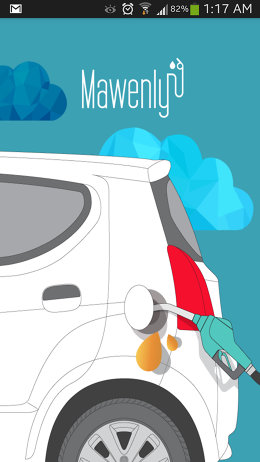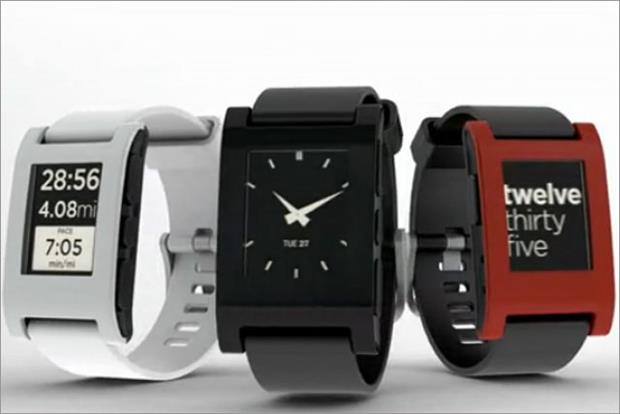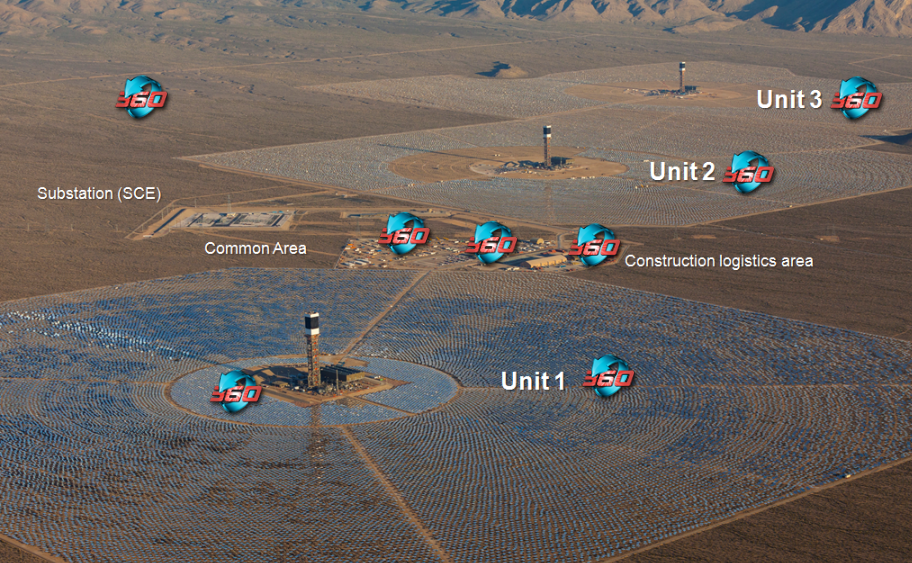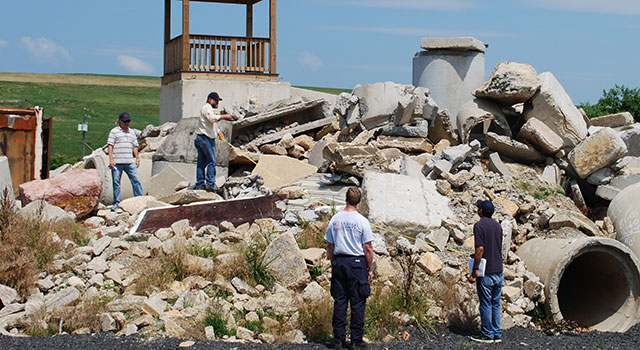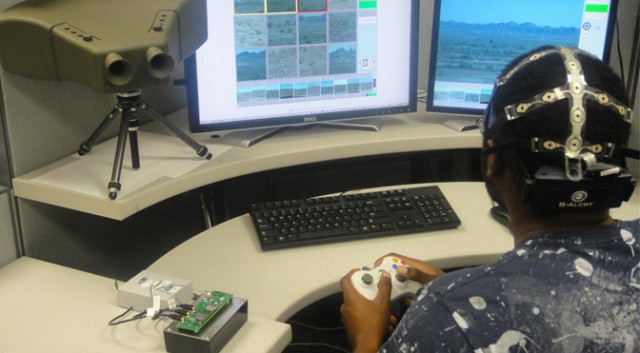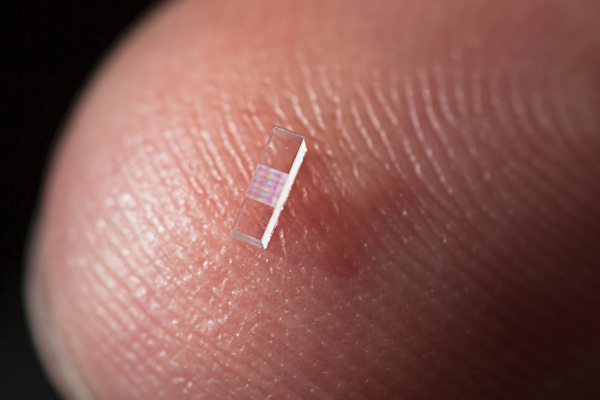Syria's War Viewed Almost in Real Time
For the first time, the war in Syria has given global audiences a close-up view of war
more in Life & Culture
»
Another video opens with a long take of a busy traffic area, full of buses and pedestrians, some of whom seem to be soldiers. One bus suddenly erupts from within, and dozens of people collapse. The videotaker repeatedly cries "Allahu akbar" and claims to be from the Al Nusra Front, a radical Islamist group.
The unprecedented confluence of two technologies—cellphone cams and social media—has produced, via the instant upload, a new phenomenon: the YouTube war. For the first time in history, the extended war in Syria has furnished global audiences with a sofa-side view of what it feels like to be there, almost in real time.
Since January 2012, according to official YouTube figures, over a million videos have been uploaded, with hundreds of millions of views to date. The company doesn't, as a matter of policy, delete even very graphic videos that are news-oriented, but it does sometimes append warnings. Bus bombs, firefights, raw scenes of bloodshed and tragedy, interrogations and executions, tank kills, deaths by sniper—the full brutal spectrum of real-life combat drama is thus now on display at the click of a finger.
Videos have poured in from all sides of the war in Syria, part of a social-media struggle to document events and ultimately to influence them. According to Hassan, a young Syrian documentary filmmaker who moved last month to the U.S. to join family and to avoid the draft (his name is changed here to prevent identification), "virtually every neighborhood, for or against Assad, has a media center that documents and processes what happens. Many went abroad for training, with funds from outside or state subsidy."
On YouTube, even those who don't know Arabic can detect the biases. Content against Syrian President Bashar al-Assad often gets captioned in English and trumpets the successes of the rebel Free Syrian Army. Wins for Mr. Assad's forces are categorized under the heading Syrian Arab Army. Troops in uniform, including the Iran-backed militia Hezbollah, tend to be pro-Assad. Rebel groups like the al-Qaeda-linked Al Nusra Front and the Islamic State of Iraq and Al Sham have logos with stylized Islamic scripts (apparently they can afford to outsource for accomplished graphic design). According to Hassan and others, each fighting group now brings along its own more-or-less professional cameramen.
But despite all the expertise in propaganda, the products can often seem bafflingly alienating or repellent. A pro-Assad channel entitled SyriaTube likes to put out close-up scenes of rebels taking hits, collapsing and dying, presented with insouciant music from spaghetti westerns and "Bye Bye" in large letters. The producers don't seem to sense anything discordant or sadistic in the juxtaposition.
One wonders also how they get hold of videos that had to be originally shot by rebels showing one of their own being hit. Hassan explains that they find them on prisoners or dead rebels: "The first thing both sides search for is cellphones or cameras."
On the rebel side, the incessant cries of Allahu akbar come across, finally, as barbaric because they are uttered so indiscriminately: at the death of a comrade, the destruction of a tank, the execution of a prisoner, the killing of innocents or the launch of a rocket toward the enemy. The implicit suggestion is that God presides as much over their boastful cruelty as over their prayers for mercy for the souls of the dead.
An Al Jazeera editor who has worked in the region for some years (and wishes to remain anonymous) says that the early videos from the conflict didn't feature such vehement religiosity. "At a certain point, fighters began to produce footage specifically to appeal to Gulf and Saudi sources of funding," he said. It has now reached the point that groups "perform missions for the camera and go back to funders saying, 'This is what $50,000 got you. For $500,000, we could knock out an entire base,' or some such."
This confluence between mercenary motives and killing for the faith isn't news to Ali Soufan, the Lebanese-American former FBI agent who, after the attack on the USS Cole and 9/11, successfully interrogated numerous Al Qaeda operatives, including Osama bin Laden's bodyguard. "Jihadi elements learned years ago to use video and social media for recruitment and funding," he said. "They're in the business of promoting themselves while the mainstream media isn't promoting them. They know it's a kind of theater."
For Mr. Soufan and others who monitor online traffic for antiterror purposes, Syrian war videos have proved a vital resource. Charles Lister, a prominent analyst for the U.K.-based IHS Jane's Terrorism and Insurgency Center, has acknowledged his dependence on videos. In a report over the summer, he analyzed scores of videos to determine the quality and quantity of weapons reaching the rebels. This occurred at a moment of intense public debate about the purported shortfall of Western support for the insurgency.
The use and misuse of war videos—their secondary and tertiary life out in the ether—will surely become part of our future experience of wars. What clues does the Syria experience offer? According to Hazami Barmada, an Arab-American who works as a consultant to various states in the Middle East, "How the videos are shared, the social media commentary around them, is as important as the content. People in the region are fully engaged in that dimension. There are two conflicts, the war and the digital war, which globalizes it."
What has this wider awareness added up to? "I don't see any good effect," says Marc Ginsberg, the former U.S. ambassador to Morocco. "Where are all the protests against Assad in Arab countries? Instead, it's probably sucked more people into the war from outside."
Videos showing the ghastly toll of the chemical weapons attack in late August proved to be a turning point of sorts, prompting a more focused debate about Western intervention. Up to then, though, Syrians had recorded any number of atrocities for global eyes, with no result. One might conclude that the age of YouTube war will bring the worst of possible outcomes: an ever-growing number of us witnessing horrors while at the same time growing fatalistic about them—just as war victims themselves do.
(¯`*• Global Source and/or more resources at http://goo.gl/zvSV7 │ www.Future-Observatory.blogspot.com and on LinkeIn Group's "Becoming Aware of the Futures" at http://goo.gl/8qKBbK │ @SciCzar │ Point of Contact: www.linkedin.com/in/AndresAgostini
 Washington
Washington










